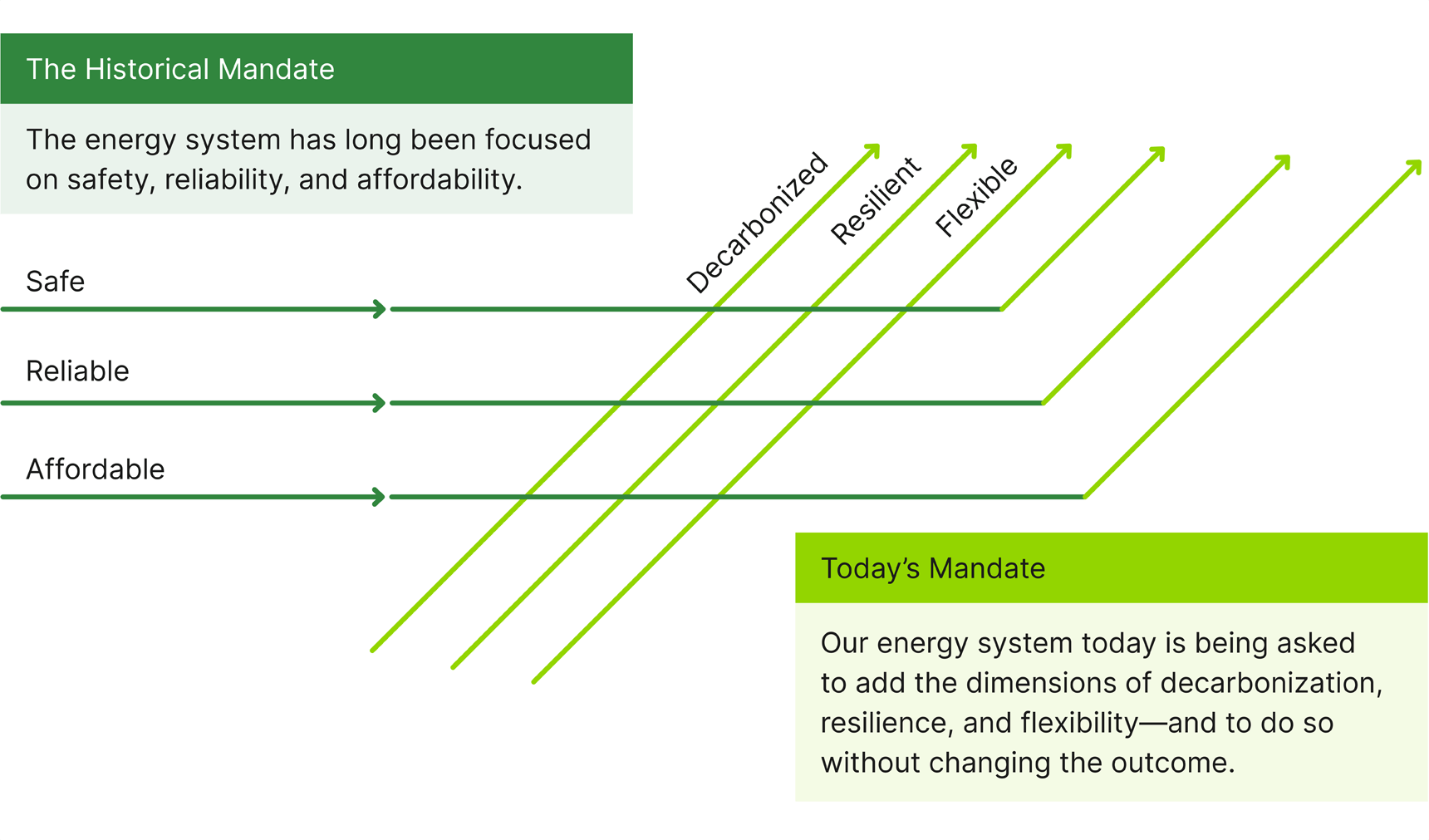 Search
Search


Our current energy system was built to be safe, reliable, and affordable. The energy system of the future that we’re in the middle of building is also expected to be decarbonized, resilient, and flexible. Internalizing these concepts that were traditionally externalities into the system is not easy, but it is increasingly harder in the face of skyrocketing energy demand growth. Because of this, existing energy infrastructure must be repurposed and reused instead of retired.

As a transformational tool for deep decarbonization, the decarbonization hub (or, more compactly, decarb hub), is an emerging model for remaking our energy system. The birth of the decarb hub concept can't be tied to one specific point in time, but an early example is that of industrial clusters, which conceived of a scaled, source-to-demand, decarbonization solution. In 2023, the decarb hub concept was introduced, which included financial support for regional direct air capture hubs and regional clean hydrogen hubs.
As a full ecosystem approach to achieving a decarbonized energy system, decarb hubs include the complete value chain from energy supply to energy demand.1 The importance of this approach lies in aligning the value propositions of a diverse set of stakeholders to gain efficiency, reduce costs, and drive greater impact.
In almost all cases, no single entity owns the complete energy value chain of a decarb hub. From government entities to private sector companies to research institutions, the specific participants in each value chain will vary depending on the type of decarbonization (e.g., carbon removal, substitute feedstocks or fuels, or process changes) and the solution to be deployed.
For example, consider that the value chain for a carbon capture and storage project may include:

Existing decarb hub initiatives have gained success through alignment with specific financial, regulatory, and policy drivers. For example, industrial hubs have succeeded in Europe due to policy pressure around deep decarbonization and alignment between policymakers and financial markets on a coordinated solution for large industrial demand. In the U.S., hydrogen hubs are being formed through a U.S. Department of Energy program designed to accelerate investment in hydrogen demand and supply.2
The decarb hub model is not just fit for responding to specific policies, it can also serve as a model for value alignment among diverse stakeholders attempting to implement key components of future decarbonization system development. Addressing the full value chain helps mitigate the significant risks associated with the relatively low commercial maturity of decarbonization ecosystems.
Three key components
To maximize the chance of success at scale, decarb hubs must include the following components:
Complete value chain—The importance of encompassing the full value chain is indisputable. The hub concept is foundationally based on orchestrating an ecosystem from supply through demand. The importance of orchestration relates to the fact that the hub model is built on diverse participants who need an overarching narrative to align needs and value drivers.
Orchestrator—Like a general contractor, the orchestrator facilitates alignment across the value chain. The distinction is that there may be no single customer for whose benefit the project is conducted. An orchestrator could be an entity within or outside the value chain, representing users as a whole or an intersection of drivers that serve as the ecosystem’s foundation. In almost all cases, the orchestrator functions like a project management office to ensure that business, financial planning, permitting, regulatory, safety, community coordination, and other considerations are properly planned and executed, and stakeholder needs are considered and addressed.
Financial enablers and penalties—Decarb hubs can be part of a governmental or other development program or motivated and driven by grassroots needs. In both cases, having financial enablers or penalties is critical because they incentivize doing something different instead of “business as usual.” Financial enablers may include tax credits, direct federal grant funding, or contracts for different models. Penalties may include carbon taxes or specific consequences for missing emissions reduction targets.
Five steps to building a decarb hub
Decarb hubs offer a new model for decarbonizing heavy industrial emitters and energy systems. While they may not work in every situation, they can provide the ideal solution for communities facing a complex set of drivers, “first-mover” risks, or complete value chain development needs.
By acting as centralized networks and launch points for mature, regionwide decarbonization, they can help foster innovation, create lasting pathways for commercially viable decarbonization solutions, and develop new economic opportunities through transformed infrastructure and clean energy generation.
Ultimately, the transition to a low-carbon energy supply chain hinges on our collective ability to mobilize and coordinate efforts across multiple sectors and regions. The potential of decarb hubs to create sustainable economic models cannot be overstated. Without them, deep decarbonization efforts that will disrupt the current fabric of our energy system will have very little likelihood of success.
Guidehouse is a global organization providing advisory, technology, and managed services to the commercial and public sectors. Purpose-built to serve the national security, financial services, healthcare, energy, and infrastructure industries, we collaborate with leaders to outwit complexity and achieve transformational changes that meaningfully shape the future.